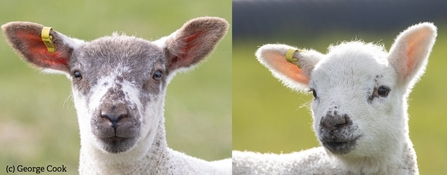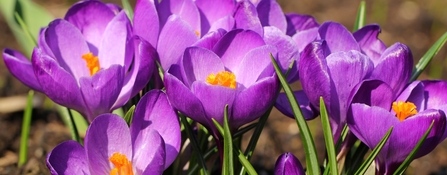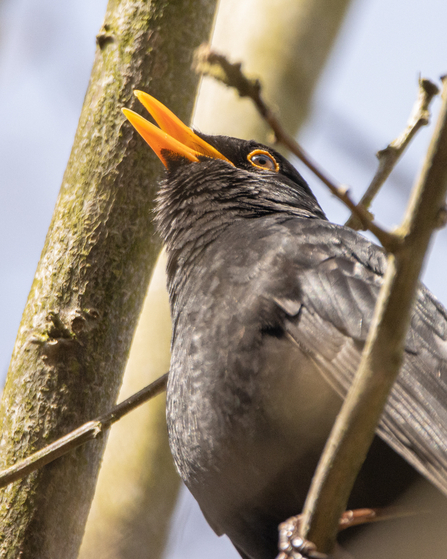The first day of February, is the date of an ancient pagan celebration called Imbolc. Based on a celtic tradition, this holiday celebrates the half way point between the winter solstice (Friday 22nd December 2023) and the spring equinox (Wednesday 20th March) and the beginning of the lambing season. The word imbolc itself might come from the old irish, mbolc meaning ‘in the belly’ referring to sheep being pregnant at this time. It is just one of many pre-christian holidays that was associated with some aspect of the changing seasons. The festival celebrates the celtic goddess Brigid, who was the goddess of poetry, healing, crafts, creativity and protection. Traditionally people would create Brigid’s crosses woven from straw or rushes or craft dolls of Brigid in order to receive blesses from the goddess.
Spring is coming

(c) George Cook
Baby lambs are just one of the many early signs of spring to start looking out for to lift the spirits and bring a bit of joy into a February day. Snow drops are another, these fragile, drooping flowers are one of the earliest flowers to emerge, often poking their heads out of snow-covered ground. Although not originally native to the UK and thought to have been brought here be travelling monks, they can now be found all over the country. Their delicate, drooping flowers have long been a symbol of hope and a sign that winter is coming to a close and spring is approaching.
Other flowers are also starting to poke out their colourful heads. The whites and purples of Crocuses are beginning to emerge providing an important early nectar source for any emerging insects including queen bumblebees who might be emerging from their winter hibernation. Of course, the well-recognised Daffodil is also starting to flower.

I woke on Wednesday morning to a lovely sound outside of my kitchen window. The beautiful, deep, whistly tune of a singing blackbird. A sound that brings joy to many spring and summer evenings. Hearing it for the first time this year, before sunrise on a winter’s morning really did lift my spirits. It certainly seems like the birds are starting to pick up their voices.
Some scientists are starting to worry that with the ever warming and changing climate, spring is starting to come earlier each year. This could cause problems for our wildlife as so much of the ecosystem relies on certain events happening in sync. The swallows need to arrive when there are plenty of insects around for them to eat and refuel after their long migration. Hedgehogs need to emerge from hibernation when there are enough beetles and invertebrates around for them to eat. The wood anemone needs to flower after the last frost but before the trees above them grow their leaves and cover them in shade. To help us understand if spring is springing earlier, you can log your spring sightings on the Woodland Trust’s Nature’s Calendar.
Nature's Calendar - The Woodland Trust
Share your spring sightings with us at Avon Wildlife Trust. Send any photos of nature awakening to communications@avonwildlifetrust.org.uk or tag us on social media @avonwt.
This time next week the sun will set after 5pm.
Spring is coming!

(c) George Cook

